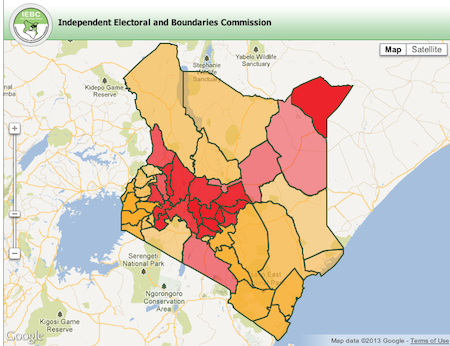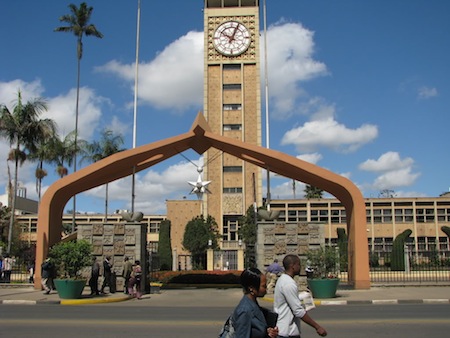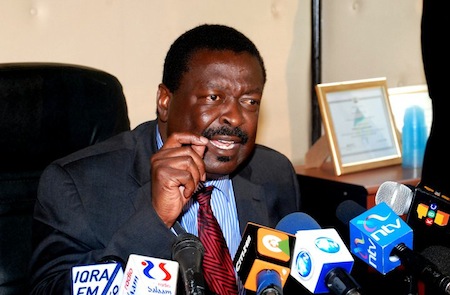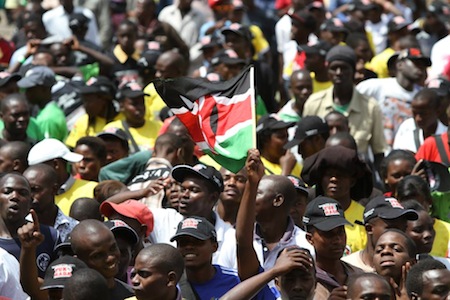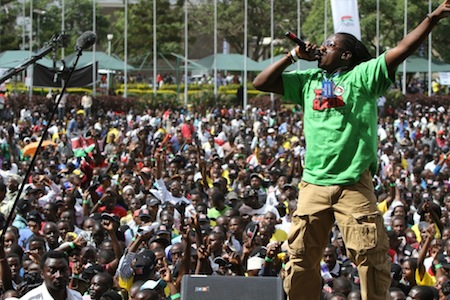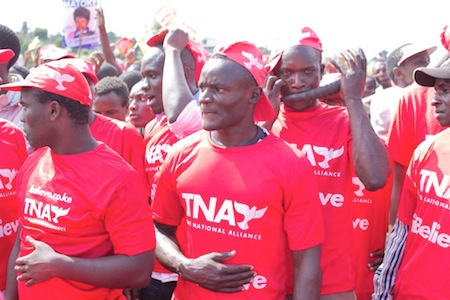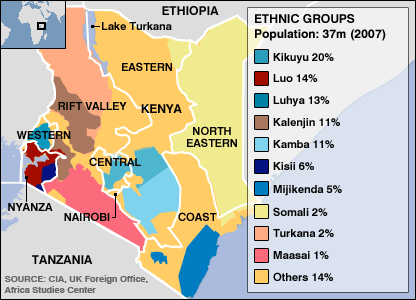Uhuru Kenyatta, after winning a seven-point victory in the March 4 presidential election, will be sworn in later this month as Kenya’s fourth post-independence president.![]()
But he’ll do so with a significant cloud hanging over his head — an indictment from the International Criminal Court on charges of crimes against humanity stemming from the last election in 2007, which precipitated two months of post-election violence that followed allegations of fraud in the narrow victory of incumbent Mwai Kibaki over challenger Raila Odinga.
What’s more, Kenyatta’s running mate, the next vice president of Kenya, William Ruto, is also a defendant on similar charges.
But Kenyatta, who comes from the Kikuyu ethnic group, and Ruto, who comes from the Kalenjin ethnic group, were on opposing sides five years ago, with Kenyatta backing Kibaki and with Ruto backing Odinga.
Those differences weren’t enough to stop Kenyatta and Ruto from joining forces this time around. Their partnership led to yet another defeat for Odinga and, this time around, the election result met with none of the civil turmoil that followed the previous election.
Nearly everyone in Kenya want to move beyond the 2007-08 violence.
Moreover, the ICC’s case against Kenyatta remains an evidentiary weak case by the standard of other ICC efforts. The ICC’s prosecution has already intruded bluntly into Kenya’s domestic politics and governance in a way that the entire Kenyan political elite opposes and that risks the court’s own legitimacy in sub-Saharan Africa, and the Kenyan people — in a free and fair vote — have elected Kenyatta their president, ICC charges or not.
The ICC indictments threaten to transform Kenya into somewhat of a pariah state — the European Union has pompously declared before the election that it would only engage in ‘essential conduct’ with Kenyatta in the event of his presidential victory, and U.S. secretary of state for African affairs Johnnie Carson was widely criticized for trying to subtly ‘warn’ Kenyans to make its choice carefully because it would have ‘global consequences.’
Kenya remains a key regional ally in the otherwise tough neighborhood east Africa, so Western governments will need to walk a tight diplomatic line, notwithstanding the ICC’s role:
A diplomatic fumble in dealing with Kenyatta could damage ties with a nation that has helped quell militant Islamists in the region and push a traditionally pro-Western state closer to China and other emerging powers hungry for openings in Africa.
Kenya’s supreme court earlier this year pointedly cleared Kenyatta, the son of Kenya’s first president Jomo Kenyatta, and Ruto to run in the election despite the ICC charges.
If that weren’t enough, the ICC may have already warped Kenyan politics by boosting Kenyatta’s bid through a sort of rallying effect — giving Kenyans a nationalist cri de coeur in a country where politics are still largely fought and won on ethnic lines. Continue reading Why the ICC should drop its case against Kenyan president Uhuru Kenyatta

